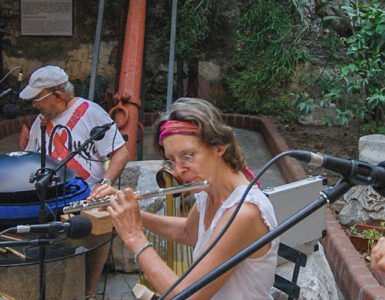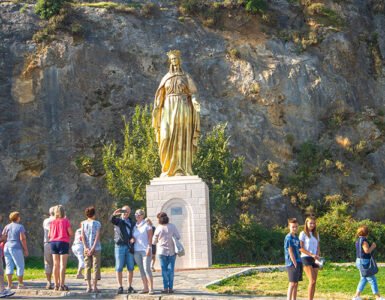I don’t even remember when I first heard of the 7 Wonders of the World. Maybe it was in primary school. But I remember I was dreaming about travelling to Egypt, not for the Pharaohs or pyramids, but for meeting the aliens who built them!
It was just one of the frustrations of childhood dreams when I understood that there were no aliens to meet but I was still dreaming of my adventure with the mummies of the mighty Pharaohs.
Eventually I did it! I went to Egypt and visited the pyramids. The thing was it felt like a touristic activity, not like a once in a lifetime adventure.
When I was planning my extra-terrestrial meeting, I wasn’t aware that the paths of some of the Seven Wonders of the World somehow intersect at Anatolia where I grew up and lived. I didn’t even know that three of them were in Turkiye.
While I was reading about Bodrum and Aegean history, I found some connections. They may not have scientific value, but I like to think in that way. For me, for example, it was a connection that The Knights of St. John who were headquartered at the city of Rhodes where Colossus was constructed in 280 BC, had built Bodrum Castle in the 15th century.
I had finally decided to write a generic article on the 7 Wonders of the World when I noticed Herodotus, probably the most famous Bodrumian in the planet, was our number one source for the wonders of the ancient world. I had just found another connection.
The history is a strange thing. It connects incidents, characters and places which don’t seem to be related at first glance, even if thousands of years had passed between them.
In This Article
Seven Wonders of the Ancient World
Tourism is not something we have recently discovered. For ages, travellers from all over the world have been visiting some special places in search of gaining fame and satisfying their curiosity.

In 5th and 4th centuries BC, Greeks were in almost everywhere in the known world. It was a great opportunity for Hellenistic travellers to visit various civilizations safe and sound. They hit the road and began to take notes about what they saw during their journeys.
There are a few references directly related to the Seven Wonders of the Ancient World. Only two of them survived in one piece until today. One is a list made by the architect Callimachus in 4th century BC and the other one is a manuscript by Herodotus of Halicarnassus, the father of history.
The Mausoleum in Halicarnassus
The Mausoleum was built by Mausolus (or his wife Artemisia II), a Persian satrap and the ruler of Caria. The construction was started in 353 BC or 355 BC in Bodrum and completed in 351 BC.
Mausolus was highly impressed with the architecture of the Greek world, so he invited artists and architects from Greece. The collaboration of the two nations had created one of the 7 Wonders of the World at Halicarnassus.

It was largely destroyed, probably in an earthquake, at the beginning of 14th century. The remaining archaeological pieces were either taken to British Museum or used in the construction of the Bodrum Castle and the Grand Harbour in Malta.
Temple of Artemis at Ephesus
It was a monumental temple built for the Greek Goddess, Artemis – or Diana in Roman mythology. It was constructed in 6th century BC and destroyed by arson in 5th century AD.
The location of the wonder is near Kusadasi at Ephesus. The distance between Bodrum and Ephesus is approximately 175 kilometres (see the distance chart here). If there is no traffic or no construction work on the road, two-and-a-half-hour drive would take you there. That is why you can always find a daily tour to Ephesus at the travel agencies around the Bodrum Peninsula.
Like Mausoleum, only its foundations and some archaeological fragments have been left today from this magnificent temple. Some of the artefacts are still displayed in the “Ephesus Room” of the British Museum.

According to Wikipedia, the beauty of the temple of Artemis was described by an ancient Greek poet as:
“I have set eyes on the wall of lofty Babylon on which is a road for chariots, and the statue of Zeus by the Alpheus, and the hanging gardens, and the Colossus of the Sun, and the huge labour of the high pyramids, and the vast tomb of Mausolus; but when I saw the house of Artemis that mounted to the clouds, those other marvels lost their brilliancy, and I said, “Lo, apart from Olympus, the Sun never looked on aught so grand.”
Antipater of Sidon
Don’t you think it is worth to visit The Temple of Diana and the Ephesus at once during your Bodrum vacation?
Statue of Zeus at Olympia
A huge sculpture of Zeus created by the Greek artist Phidias has been considered as one of the 7 wonders of the world. In 435 BC, Phidias created his masterpiece with precious stones, gold, ivory and ebony and erected it in the Temple of Zeus in Olympia, Greece.
We couldn’t find an illustration or a copy of these 13 metres tall, gigantic sculpture yet. The manuscripts of travellers and the illustrations of the statue on old Greek coins help our imagination to visualize it.
Its destruction is also another unknown, yet an interesting story. Byzantium Emperor in Constantinople – Istanbul – had ordered moving of Statue of Zeus to the capital. It must have been a difficult task. It was dissembled and carried to Byzantium Empire. Then it was reassembled in the palace of Lausus in Istanbul in 475 AD. Some historians believe it was destroyed in a fire which took place around 436 AD.
Great Pyramid of Giza
Although it is the oldest of the seven ancient wonders of the world, the Great Pyramid of Giza is the only one which could survive in nearly intact condition. It is also known as Pyramid of Khufu or Pyramid of Cheops. Cheops is Khufu’s Hellenic name as the Greek travellers of the ancient times called him.

Historians think it was constructed as the tomb of Pharaoh Khufu who ruled the old kingdom for 66 years in 26th century BC. Unbelievable, 4,600 years ago!
For me, it was a little bit frustrating visiting the pyramids. I was just expecting something more mystical. Instead, I got sandstorm, murmur of thousands of people and claustrophobia by being in a low and narrow tunnel with hundreds of people sweating under hot Egyptian sun, just like me.
Still, it is so magnificent and impressive that I am glad I was there against all odds. Besides, I really liked being lost in the old alleys of the Cairo downtown.
Colossus of Rhodes
The Colossus of Rhodes was a 30 metres tall statue which was made up of white marble, iron and brass. It was located in the harbour of Mandraki in the Greek Island of Rhodes.
It was constructed by Chares of Lindos in 280 BC to honour the Greek god Helios. A statue as tall as 10 stories building couldn’t stand on its feet for a long time. After an earthquake wiping away the city of Rhodes in 226 BC, the Colossus fell down. The Rhodians were afraid of Helios and didn’t attempt to repair and erect it again. I know it is unbelievable, but the statue remained laying on the ground for over 800 years.
Arabs captured Rhodes in 653 AD and sold the statue to a Jewish merchant, Edessa. Rumour has it, the merchant had carried the bronze parts away with 900 camels. However, this story may not be reflecting the historical facts because all evidence in references to the Colossus of Rhodes disappears long before the Arab invasion.
Hanging Gardens of Babylon
Among all the Seven Wonders of the World, this is the only one that we don’t know its exact location. Sometimes I think it is just a legend since there has been no evidence found about its existence, even in the original Babylonian texts. In addition, archaeologists haven’t found any artefact or fragment from the gardens yet. Still, we have some Greek manuscripts admiring the beauty of Hanging Gardens of Babylon.
The stories, or should I say legends, are quite romantic about this oriental garden. Nebuchadnezzar II was the king of the Ne-Babylonian Empire between 605 BC and 562 BC in Mesopotamia. He was married to Queen Amytis who was a beautiful and a sad Persian woman.

She was sad because she was missing the green nature of her hometown. Nebuchadnezzar gave an order for constructing the hanging gardens to cheer his wife up. An old Romeo and Juliet story with happy ending!
Even if it did exist, it must have been destroyed after the 1st century AD because the travellers suddenly stop mentioning it. Most historians agree that it was an earthquake bringing its destruction.
Lighthouse of Alexandria
One of the tallest buildings which was constructed by man was the Lighthouse of Alexandria for a long time. It is also known as the Lighthouse of Pharos and the third longest surviving monument among all the ancient wonders of the world, after the Great Pyramid of Giza and the Mausoleum at Halicarnassus.
The lighthouse was built sometime in between 280 BC and 247 BC at Alexandria in Egypt. It was 137 metres tall, equal to a 45 stories tall building. Don’t you think it is enough to make us stop boasting with our tall skyscrapers of the modern world?
Alexander the Great founded the city of Alexandria in 332 BC. After his death, his top general announced himself as the new king and started to construct the lighthouse. It took 12 years, and the general couldn’t see its completion, but his son did.
Lighthouse of Alexandria remained intact until 796 AD. Then something happened at the upper tier of the wonder, but it was still standing. However, 3 earthquakes in 956, 1303 and 1323 finished the job and the world lost one more of the 7 wonders of the world.
















Add comment